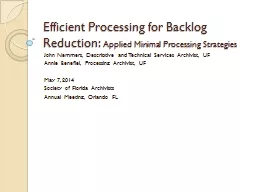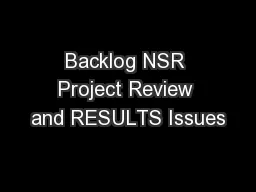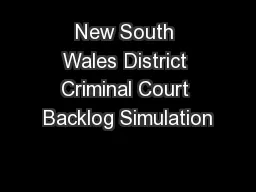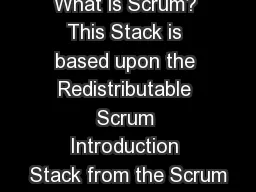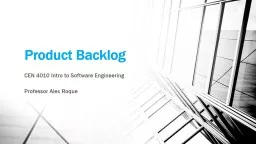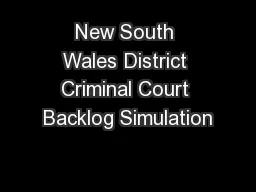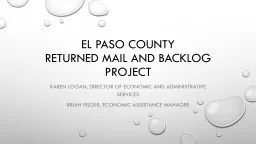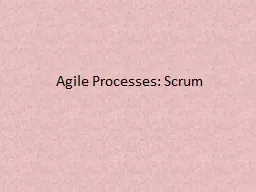PPT-Efficient Processing for Backlog Reduction:
Author : askindma | Published Date : 2020-06-16
Applied Minimal Processing Strategies John Nemmers Descriptive and Technical Services Archivist UF Annie Benefiel Processing Archivist UF May 7 2014 Society of
Presentation Embed Code
Download Presentation
Download Presentation The PPT/PDF document "Efficient Processing for Backlog Reducti..." is the property of its rightful owner. Permission is granted to download and print the materials on this website for personal, non-commercial use only, and to display it on your personal computer provided you do not modify the materials and that you retain all copyright notices contained in the materials. By downloading content from our website, you accept the terms of this agreement.
Efficient Processing for Backlog Reduction:: Transcript
Download Rules Of Document
"Efficient Processing for Backlog Reduction:"The content belongs to its owner. You may download and print it for personal use, without modification, and keep all copyright notices. By downloading, you agree to these terms.
Related Documents

